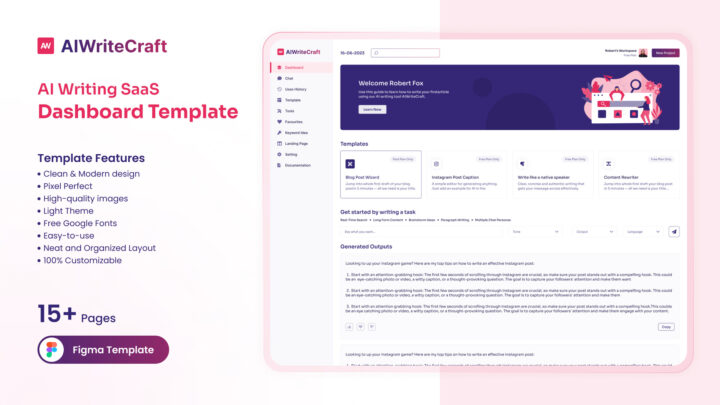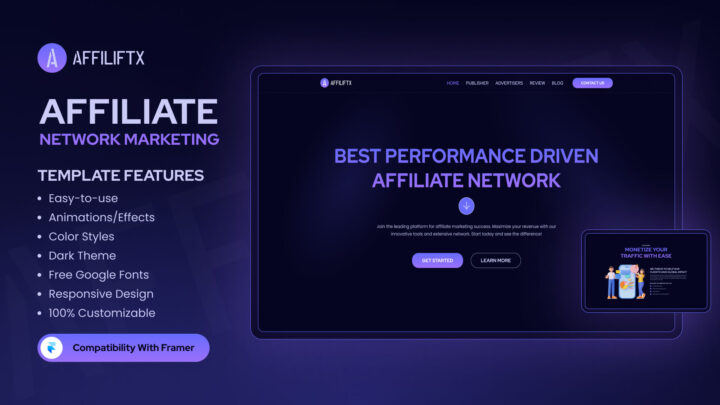
Why Next.js Is the Best Framework for SEO in 2025
Search engine optimization (SEO) can make or break a website’s success in 2025. With search engines increasingly emphasizing user experience and speed, choosing the proper web framework is crucial for ranking well. Next.js – a popular React-based framework – has emerged as a standout solution for building SEO-friendly websites. It tackles many traditional single-page application SEO challenges by offering server-side rendering (SSR) and static site generation (SSG) out of the box. Next.js sites load fast, deliver content easily crawlable by search bots, and provide excellent user experiences – all key ingredients for higher search rankings.
Next.js’s surge in popularity reflects its SEO and performance advantages. The chart above shows its usage skyrocketing from 9% of surveyed developers in 2018 to over 50% by 2024. Many high-traffic companies (from GitHub to CNN) rely on Next.js in production, underscoring industry confidence in its ability to build fast, SEO-optimized web applications.
In this post, we’ll explore why Next.js is the best framework for SEO in 2025. We’ll dive into its key SEO benefits (SSR, SSG, Core Web Vitals improvements, metadata management, image optimization) and see how Next.js stacks up against other frameworks like React, Angular, and Gatsby. Along the way, we’ll include data points and real-world examples to back up each point.
Key SEO Advantages of Next.js in 2025
Next.js was designed with performance and SEO in mind. Here are some of the standout features that make Next.js excel at search optimization:
- Server-Side Rendering (SSR) for Crawlable Content: Next.js automatically renders pages on the server for each request, sending fully formed HTML to the browser. This is crucial for SEO – search engines can crawl and index your content without waiting for client-side JavaScript. Instead of an empty shell, Next.js pages arrive with meaningful HTML, which directly leads to better indexing and rankings. By contrast, a plain React app without SSR might show little content to crawlers until its JavaScript loads.
- Static Site Generation (SSG) for Speed: Next.js also supports building pages at compile time. With SSG, pages are pre-built as static files and served blazingly fast from a CDN. This dramatically improves page load times – a significant SEO factor. Content that doesn’t need to be dynamic (such as blogs or documentation pages) can be served this way, resulting in faster loads and higher Core Web Vitals scores. Next.js enables Incremental Static Regeneration (ISR) to update or add static pages on the fly so that large sites can stay fresh without lengthy rebuilds.
- Optimized Performance and Core Web Vitals: Performance is a core pillar of SEO, and Next.js includes many features to keep sites fast. It implements automatic code-splitting (loading only the JS needed per page) and prefetches internal links for quicker navigation. Next.js 13+ introduced React Server Components and streaming, which reduce the amount of JavaScript sent to the client and improve metrics like First Contentful Paint (FCP). Users see content sooner and can interact faster, boosting Core Web Vitals scores. Google’s page experience algorithm treats metrics like FCP, LCP, and INP as important ranking factors, so Next.js’s ability to improve these metrics can directly benefit SEO. For example, after optimization, one Next. Js-powered site saw a 66% improvement in mobile INP (an interactivity metric), leading to better search rankings. By delivering content quickly (even on slower devices), Next.js directly contributes to better SEO outcomes.
- Built-In Image Optimization: Images are often the heaviest elements on a page, but Next.js makes optimizing them easy. It’s built-in <Image> component automatically generates responsive image sizes, compresses images, and serves modern formats like WebP. It also lazy-loads images by default and enforces providing alt text. The result is faster loading visuals and lower Cumulative Layout Shift – improvements that search engines reward. Next.js gives optimized, SEO-friendly images that are out of the box without needing complex third-party setups.
- Easy Metadata and SEO Tags Management: Next.js simplifies control of page titles, descriptions, and other meta tags. You can define unique SEO metadata for each page using the built-in next/head (or the new metadata API in Next 13). This ensures that search engines see relevant titles and descriptions for every URL, and that your content has proper Open Graph tags for social sharing. Next.js’s file-based routing automatically yields clean, human-readable URLs, and you can easily generate sitemaps and robots.txt files to guide crawlers. In short, Next.js makes on-page SEO straightforward – you can manage SEO-critical tags directly in your React code, and keep search engines informed of your site’s structure with minimal effort.
Next.js essentially provides a toolkit of modern web best practices aligned with what search engines prioritize – fast rendering, optimized assets, and well-structured content. Now let’s compare how Next.js stands up against some other frameworks in terms of SEO.
Next.js vs Other Frameworks: SEO Comparison
While Next.js isn’t the only way to build an SEO-friendly site, it certainly makes the job easier compared to many alternatives. Below is a comparison of Next.js with plain React, Angular, and Gatsby – three popular choices for web development – from an SEO perspective.
Comparison of SEO-Related Features:
| Feature | Next.js (React framework) | Plain React SPA | Angular (w/ Angular Universal) | Gatsby (React static) |
|---|---|---|---|---|
| Server-Side Rendering (SSR) | Yes – built-in, effortless SSR per page. | No – only client-side by default (no pre-rendered HTML). | Yes – via Angular Universal, but requires additional configuration. | Partial – pages pre-rendered at build (no per-request SSR, except for previews). |
| Static Site Generation (SSG) | Yes – supports SSG and Incremental Static Regeneration for updates. | No – not supported without extra tooling. | Limited – Angular can prerender certain pages with extra tools. | Yes – core approach is SSG (all pages generated at build time). |
| Content Update Flexibility | High – mix of SSR & SSG, plus on-demand ISR for content changes. | High for app development, but SEO suffers if only CSR. | Medium – SSR is possible but adds complexity; otherwise CSR. | Medium – static builds are fast, but large sites or frequent updates lead to longer build times (DSG helps somewhat). |
| Image Optimization | Yes – built-in component (auto compression, lazy loading, WebP). | No – requires manual optimization or libraries. | No – images must be optimized via third-party tools. | Yes – through plugins (e.g. gatsby-image). |
| Meta Tags & Links | Built-in <Head> management; clean URLs by default; easy dynamic routes. |
Requires manual setup (e.g. React Helmet for meta tags) and custom routing. | Manual – use Angular Meta services and configure routing for each page. | Uses plugins for SEO (e.g. Helmet for meta tags, sitemap plugin for URLs). |
| Performance (Core Web Vitals) | Excellent – optimized defaults (code-splitting, prefetching, SSR/SSG) yield fast LCP and low CLS. | Varies – can be fast, but without SSR initial load is slower. | Good – Angular can be fast with optimization, SSR helps if used. | Excellent for static content – very fast initial load; but updating lots of content can be slower due to rebuilds. |
| SEO Effort Required | Low – SEO best practices are enabled by default. | High – extra work needed to implement SSR or prerendering. | High – must implement Angular Universal and other optimizations. | Medium – many SEO plugins are available, but configuration can be involved. |
Next.js vs React (CSR)
A plain React Single Page Application (e.g., a typical create-react-app) is rendered entirely on the client, which can be problematic for SEO. Search engine crawlers might only see a blank page or a “loading” message in the initial HTML, since JavaScript injects content later. This makes indexing slower or less effective, and users experience slower first-page loads. Next.js solves this by adding server-side rendering and static generation to React. Your pages can be delivered with full content from the start, vastly improving crawlability and load speed. The development community agrees that if SEO is a priority, Next.js is the superior choice over plain React. It handles the heavy lifting of generating HTML and optimizing assets, whereas a plain React app would require significant custom work (or additional libraries) to achieve the same SEO results. In short, Next.js gives you the power of React without the SEO downsides, making it much easier for your React-based site to rank well on Google.
Next.js vs Angular
Angular is a robust framework for building web apps, but it wasn’t initially designed with SEO in mind. By default, Angular (without server-side rendering) generates content in the browser, similar to React, which means a crawler may struggle to find much content on an Angular page. Angular does offer Angular Universal for SSR, but this requires extra setup and complexity. Next.js holds a clear SEO advantage: SSR and SSG are built into its core, so it is effortless to deliver crawlable HTML. Additionally, Angular applications tend to have larger bundles and more overhead, which can hurt performance if not optimized, whereas Next.js apps are typically lean and fast by default. As some have noted, Angular often “requires more manual effort… to achieve the same level of performance” and SEO readiness that Next.js provides out-of-the-box. Unless your project specifically needs Angular’s ecosystem, using Next.js will generally get you better SEO results with less effort.
Next.js vs Gatsby
Gatsby is another React-based framework known for its excellent static site generation capabilities. Gatsby and Next.js can produce very fast, SEO-friendly websites by prerendering pages. If your site is mostly static content, Gatsby can be a great choice – it builds all pages ahead of time and often achieves top-notch page speed. However, Next.js offers more flexibility for mixed-content sites. With Next.js, you can statically generate pages and server-render or update content on demand (using ISR) for pages that change frequently or are user-specific. Gatsby has introduced features like Deferred Static Generation (DSG) to help with large sites, but managing large or constantly updating projects can become challenging as build times grow. Next.js handles these scenarios by only building or rebuilding content as needed, which is more scalable for many projects.
Another difference is in tooling and plugins. Gatsby relies on a plugin ecosystem for many features (data sourcing, image optimization, SEO tags, etc.), which can require additional configuration. Next.js comes with much functionality out-of-the-box, reducing the need for plugins. Ultimately, both frameworks can deliver high-performance, SEO-optimized sites, but Next.js tends to be favored for dynamic use cases and a more straightforward development workflow. Many teams that began with Gatsby for its SEO benefits have migrated to Next.js to gain more flexibility without losing performance. For a mostly static blog or marketing site, Gatsby is fine, but for anything more complex or frequently updated, Next.js provides the best of both worlds in terms of SEO and adaptability.
Real-World Impact and Adoption
Real-world results back Next.js’s SEO strengths. Many high-traffic websites have adopted Next.js to deliver content-rich pages that load fast and rank well, such as a healthcare startup’s Next. After performance optimizations, a JS-based site achieved a 66% reduction in mobile INP (interaction delay), significantly boosting its search rankings. In another case, an e-commerce company that migrated to Next.js saw a substantial uptick in organic traffic and faster page load times for users. These success stories show how Next.js’s features translate directly into SEO improvements and business growth.
The broader developer community has also recognized Next.js’s advantages. In the 2024 State of JavaScript survey, Next.js emerged as the most widely used frontend framework of its kind, reflecting its ability to solve modern web challenges (like SEO) effectively. Its rapid adoption and ecosystem support mean there are plenty of tools, guides, and community knowledge to help you optimize your Next.js site for search. Stack Overflow’s 2023 developer survey ranked Next.js among the top three most desired web frameworks – a reflection of developers’ trust in its ability to build high-performance, SEO-ready sites.
Conclusion
In 2025, delivering great SEO results means excelling in site performance, user experience, and crawlability. Next.js stands out as the best SEO framework because it tackles these technical requirements head-on. By default, Next.js provides server-rendered, speedy pages with clean, indexable HTML, automatically taking care of many SEO best practices. It simplifies optimizing images, managing metadata, and keeping page loads fast on every device.
Compared to alternatives, Next.js consistently proves to be the more SEO-friendly choice. It offers the capabilities that plain React apps lack, and it’s generally easier to achieve top performance and indexing than using Angular or other solutions. Next.js strikes a unique balance by effortlessly supporting static and dynamic content, ensuring that you can build a site that search engines will love no matter your project’s needs.
In summary, Next.js is the best framework for SEO in 2025. It empowers you to create high-performing, content-rich websites that search engines can crawl easily and users can enjoy without delay. Its built-in features align closely with Google’s ranking factors – from Core Web Vitals to mobile-first readiness. By choosing Next.js, development teams, and digital marketers can work together seamlessly to achieve better organic visibility, higher traffic, and an improved user experience. In a competitive online landscape, Next.js provides a valuable technical edge to help your site reach the top of search results.
- Categories: Reading
Recent Posts
Recent Products
Share This Post
Subscribe To Our Newsletter
Get More Update and Stay Connected with Us



















